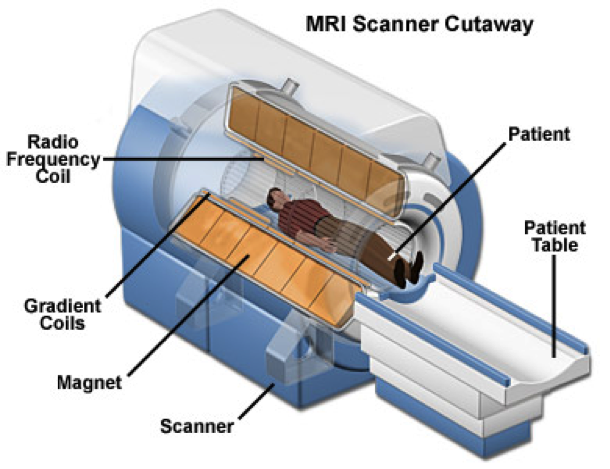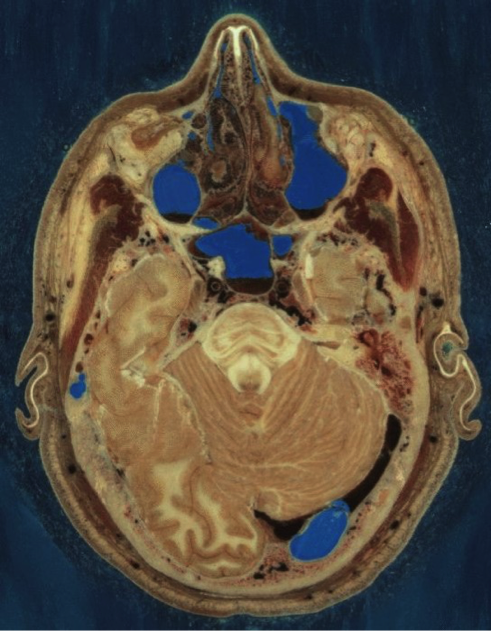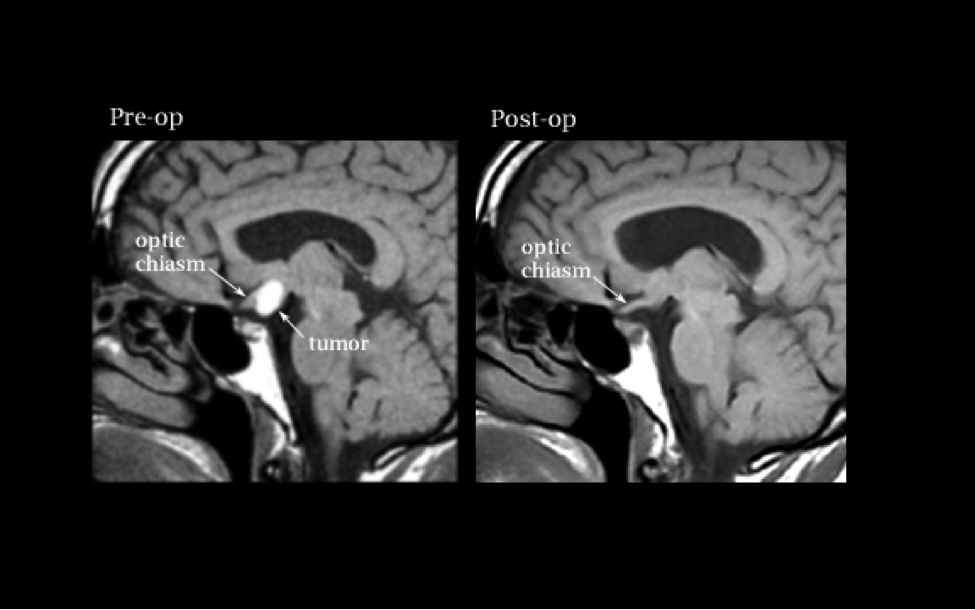Magnets and the Mind
Today, Magnets and the Mind. The University of Houston presents this series about the machines that make our civilization run, and the people whose ingenuity created them.
It's late at night. I am sitting in the control room of an MRI machine next to the technician who is running the controls. I look through the glass window to see my patient in the MRI tunnel. He is wearing earphones. The music helps him ignore the loud clicking and banging noises around him. A small mirror, tilted at 45 degrees in front of his face, helps him see outside the tight tunnel. The noise and the tight space are the only things he can focus on at the moment. He does not feel the strong magnetic field that is ordering the hydrogen atoms in his body to line up and dance. He does not see the giant electromagnets and coils inside the smooth shell of the machine that wraps around him. He does not know that all that noise comes from the unintended distortion of those coils in response to rapid fluctuations in the magnetic field - fluctuations that are programmed to produce an image of his brain.

An MRI machine has three main parts: a large electomagnet, gradient coils and radiofrequency coils. See End Notes for mechanism of action. Photo Credit: Slideshare
On my side of the window I see cross-sectional images of his brain pop up on the computer screen. These remind me of a display case I saw in medical school in the 80s. It was a long plexi-glass case in our anatomy lab that contained cross-sectional slices of a real human body. Some anatomist had sliced an entire cadaver from head-to-toe for the benefit of future generations of medical students. Even back then, at the dawn of the age of MRI, the display seemed like a grotesque relic of the past.
In 2003, the Nobel Prize in Medicine was awarded to Paul Lauterbur and Peter Mansfield for invention of magnetic resonance imaging. There is controversy about whether another scientist, Raymond Damadian, should have shared the prize. MRI technology is based on the fact that hydrogen atoms in different cells and tissues in our bodies respond differently to fluctuations in a strong magnetic field and emit different radiofrequency signals. These signals are captured by the machine and mathematically transformed to produce different shades of gray for each pixel on a computer screen, thus producing an image.

A cross-sectional slice of the brain of a human cadaver similar to the ones mentioned in the episode. Photo Credit: Visible Human Project of the National Library of Medicine
Over the past 40 years, MRI technology has evolved so much that we can now image the function of the brain, not just its structure. We can see what parts of a patient's brain are working when he speaks or when he moves his arm so that we can avoid damaging those parts during surgery. We can even see what parts of the brain are activated when someone thinks about moving their arm or when they have a particular emotion or when they lie.

MRIs of the brain, showing images before and after an operation to remove a tumor from visual system. Photo Credit: P. Pakzaban.
As the images continue to pop up on the screen, I marvel at the human ingenuity that has made it possible for us to look into our own minds.
I am Peyman Pakzaban for the University of Houston, where we are interested in the way inventive minds work.
(Theme music)
1. Magnetic Resonance Imaging, Wikipedia, https://en.wikipedia.org/wiki/Magnetic_resonance_imaging
2. MRI: What, Why and When. K. Kulkarni, SlideShare, http://www.slideshare.net/keshrad/basics-of-mri
3. MRI (Introduction). C. Hacking, J. Jones, Radiopaedia, http://radiopaedia.org/articles/mri-introduction
How MRI Works. A giant cylindrical electromagnet made of superconducting material (Image 1) creates a very strong magnetic field. Then the gradient coils 'shape' the magnetic field into a gradient, where the strength of the magnetic field changes as a function of distance. This is necessary for spatial processing of the final image signal which happens later.
Hydrogen atoms (protons) in the water molecules in our body have a non-zero quantum spin which gives them a magnetic dipole; i.e. they act like tiny spinning magnets. The strong magnetic gradient produced by the magnet and shaped by the gradient coils makes the proton spins line up. Then the radiofrequency coil delivers a short radiofrequency pulse which forces the protons spins to change their alignment. Once the pulse ends, the proton spins 'relax' to their original state and, in the process, emit a radiofrequency signal which is captured by the radiofrequency coil. This signal is then mathematically transformed to provide grayscale pixel data for an image. It turns out that proton spin in different tissues and cell types relax at different rates, thus providing the contrast that is essential for tissue discrimination in the image.
This episode was first aired on December 15, 2015